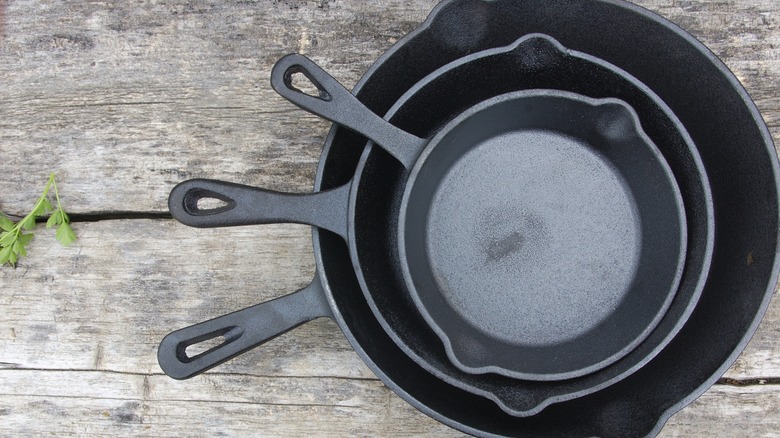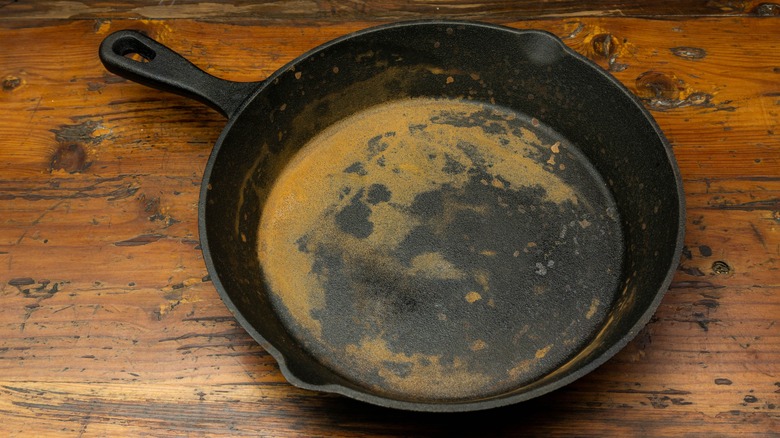The Storage Mistake That's Sabotaging Your Cast Iron Skillet
Cast iron cookware can be complicated. After all, there are a few extra precautions you'll need to take when working with it, including using the right utensils, properly removing stuck-on food, and seasoning your pans well. One of the most important things to remember to be mindful of when working with cast iron, though, is to always stack pans with protection.
Cast iron pans are actually great for stacking because they are able to nest nicely inside each other. But because cast iron is such a heavy material, this pressure can sometimes scratch or scrape the surface of the skillets, which can damage the seasoning. Putting a layer of protection between each pan can help protect its surface. A paper towel or newspaper will do the trick, or you can buy some sort of spacer, such as cork.
If your cookware is made of enameled cast iron, you may want to go with a different storage option. Enamel tends to be a bit heavier than conventional cast iron and, because of this, it's more fragile and more likely to chip or crack and shouldn't be stacked.
Other benefits of padding your cast iron when stacking
Besides acting as a buffer, a layer of paper towel or other protection inside your cast iron can serve a few other purposes. First, it keeps the cooking surfaces clean by preventing contact with the potentially dirty bottoms of other pans. You don't need crumbs or dirt particles sticking to the seasoning in the surface of your favorite pan.
Speaking of seasoning, the paper towel storage trick also prevents cast iron pans from sticking together when stacked and stored. Pans that are over seasoned, or have too much built-up oil, can be quite sticky and could stick together in storage, especially if not used frequently.
Perhaps most importantly, though, a paper towel in between your cast iron cookware helps to soak up any excess moisture and prevents rust from forming. You must be sure to dry it thoroughly after cleaning, but the paper towel can assist during long-term storage to wick away any moisture left behind in the microscopic crevices which, when left alone, can quickly lead to corrosion.

